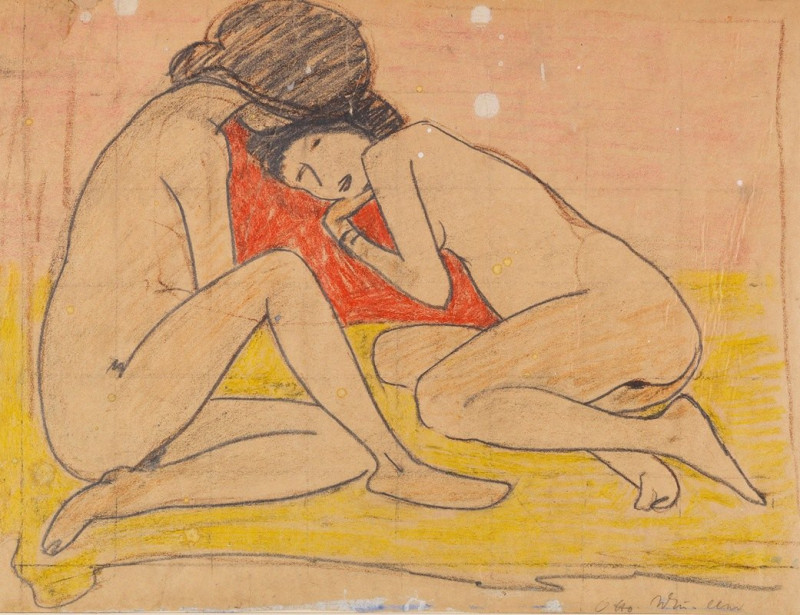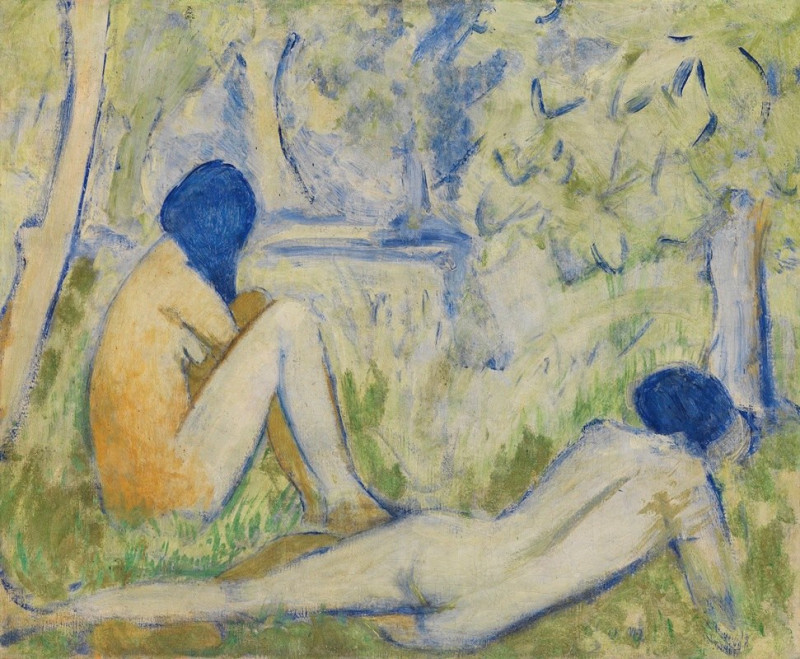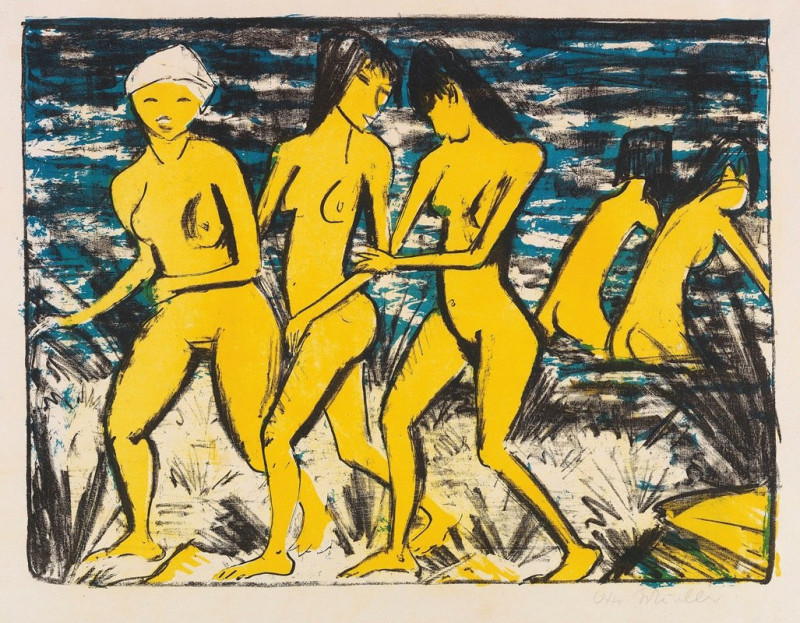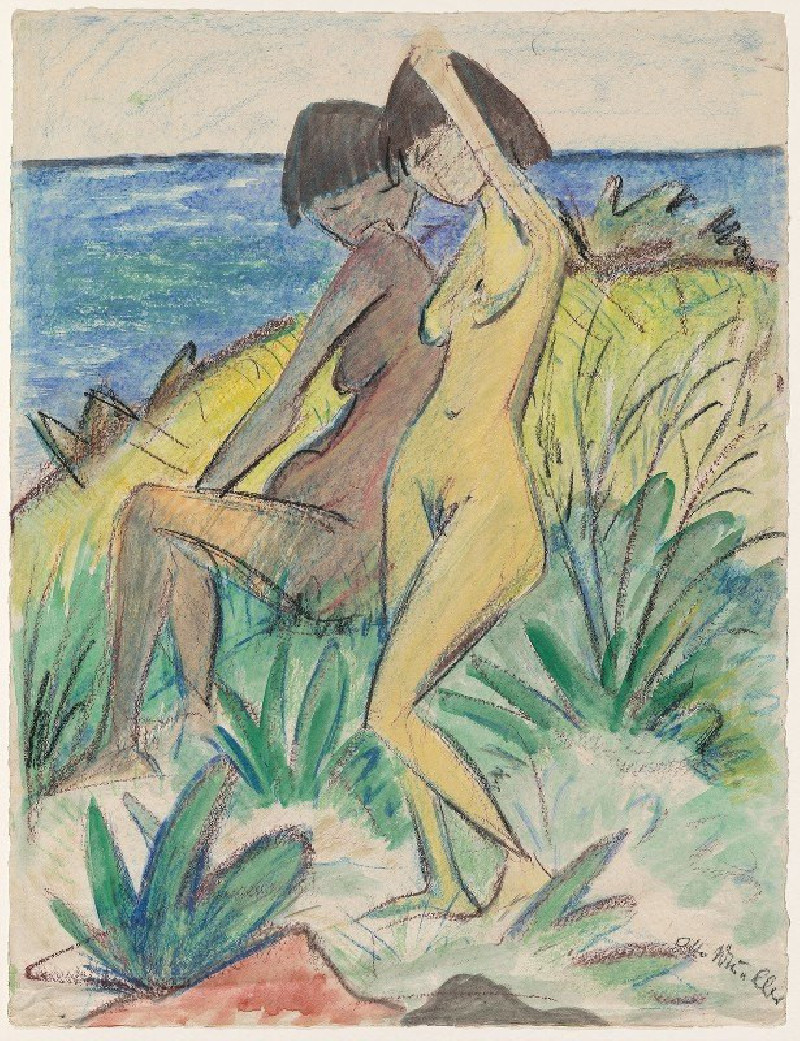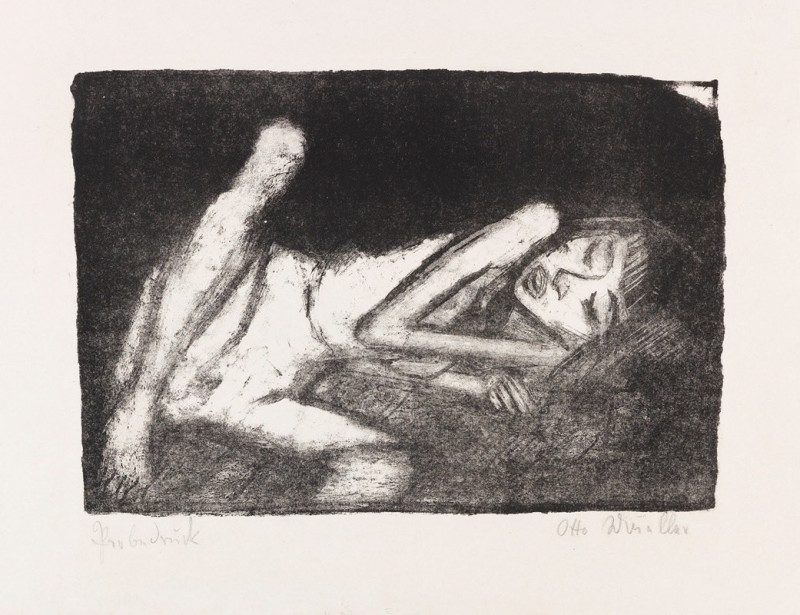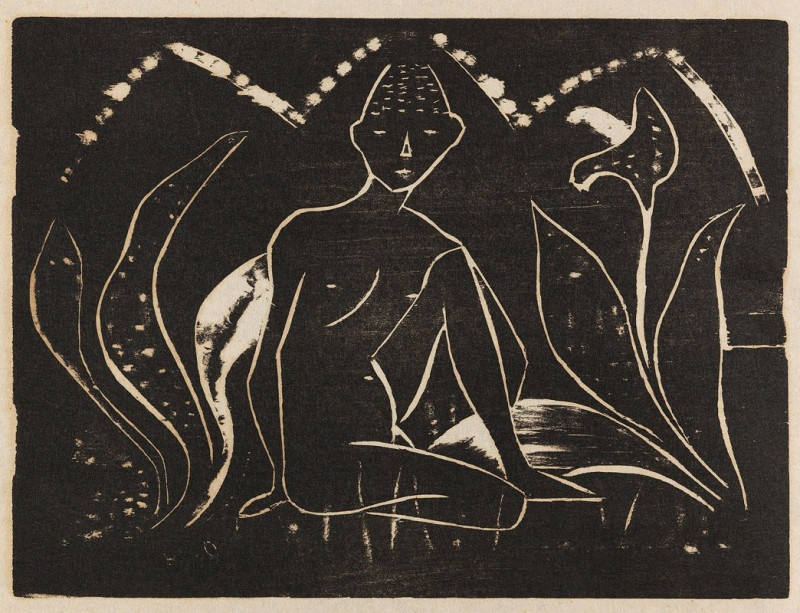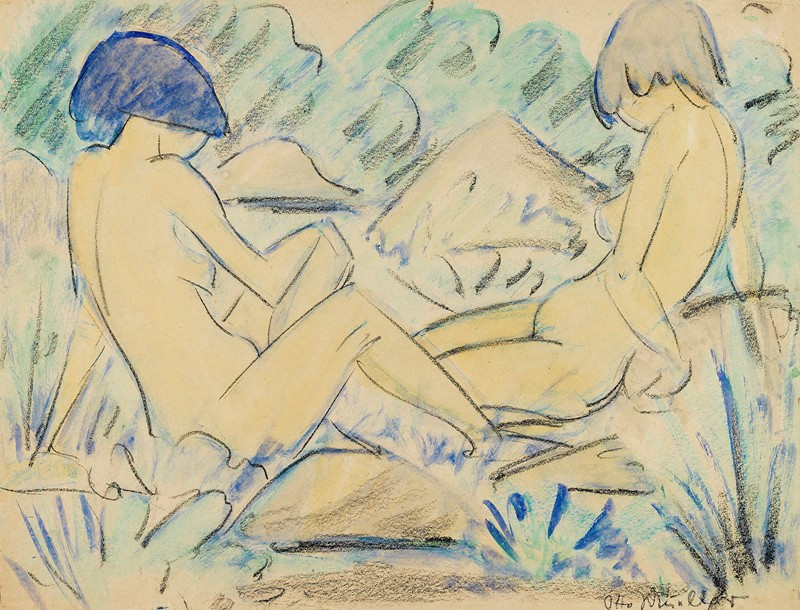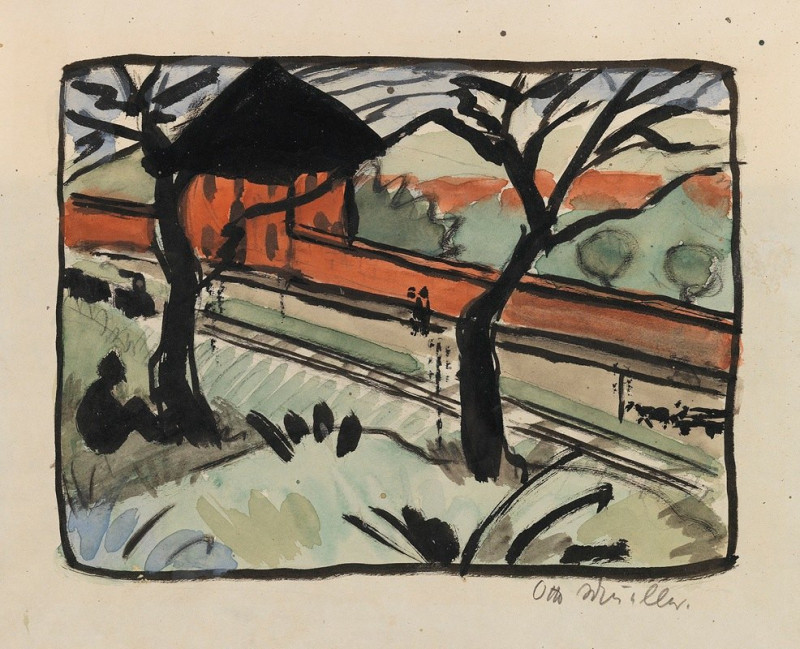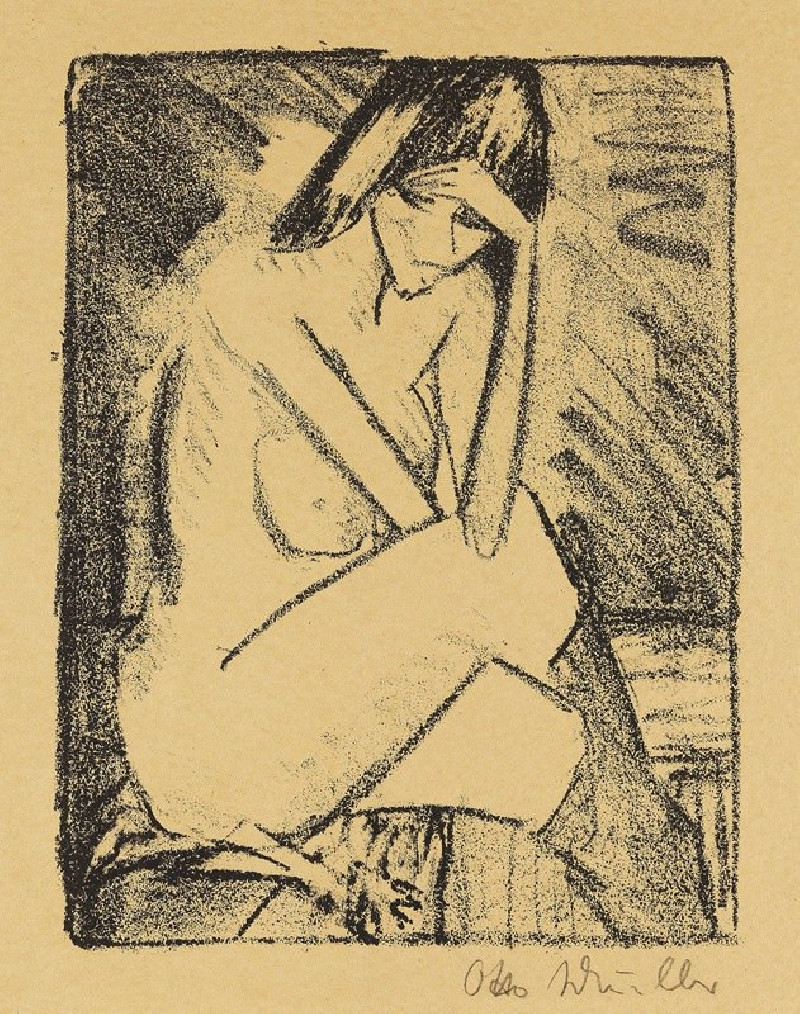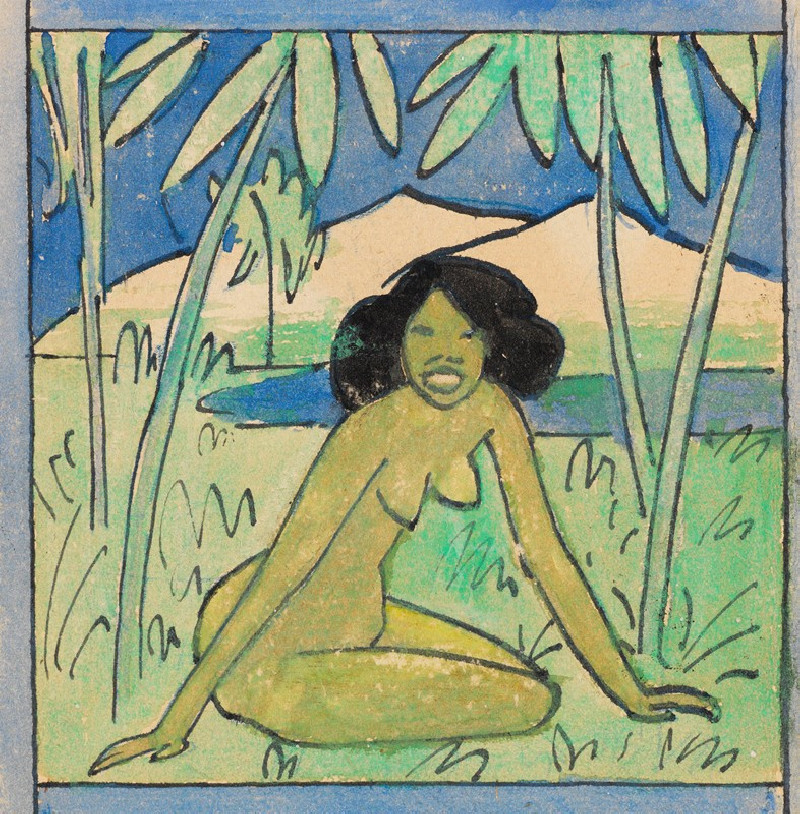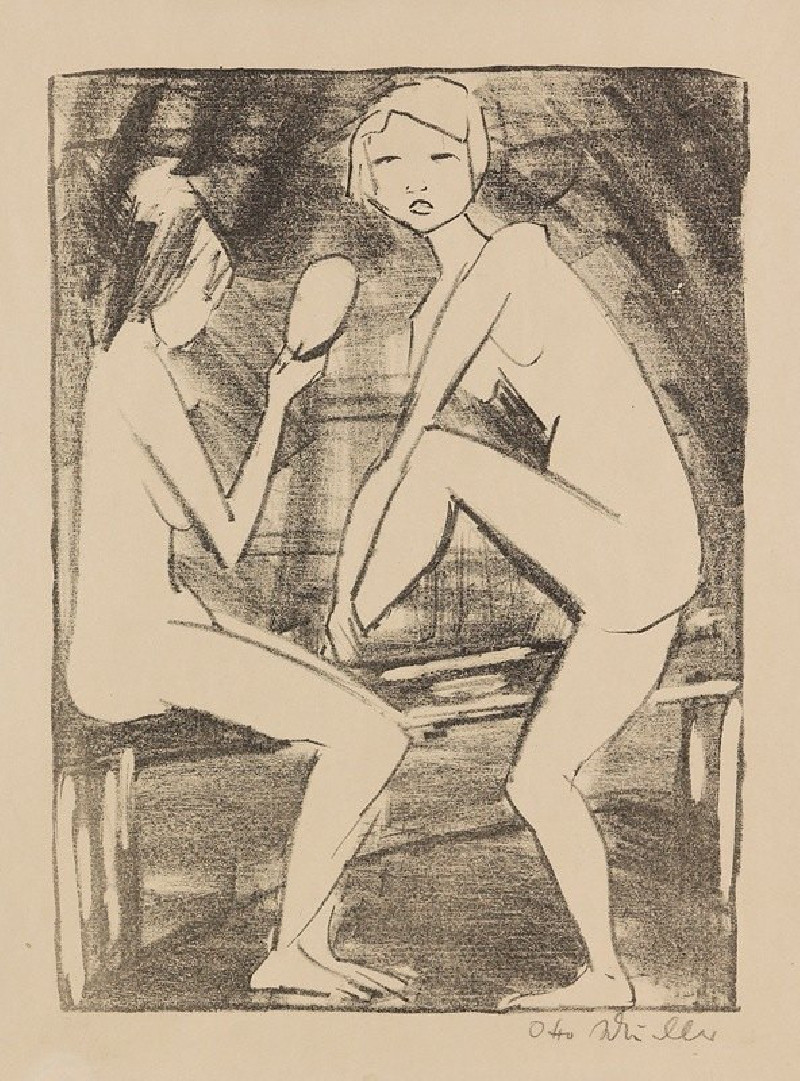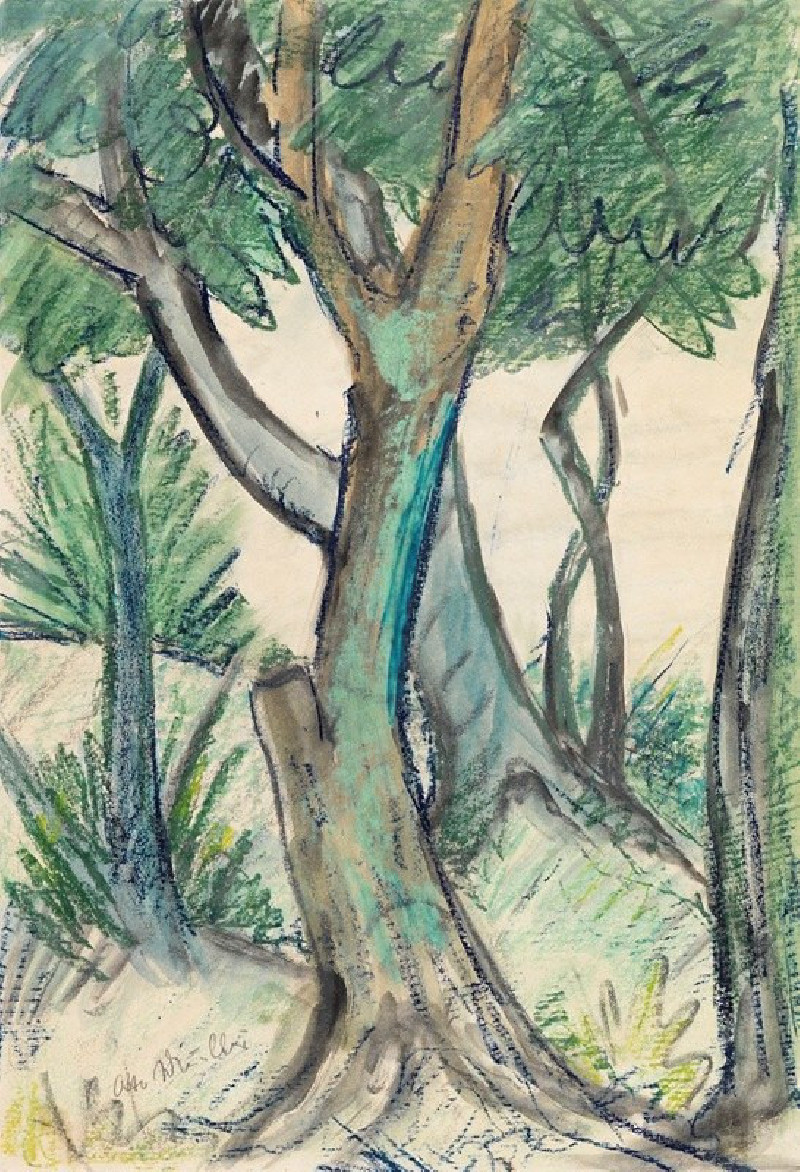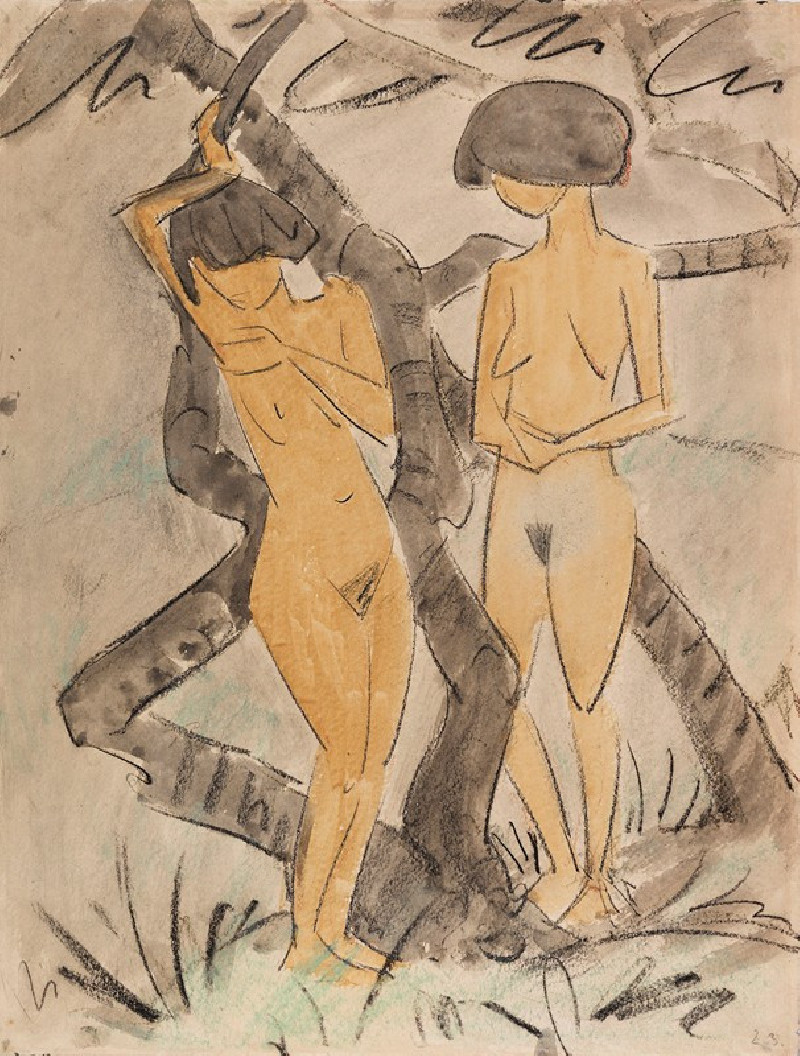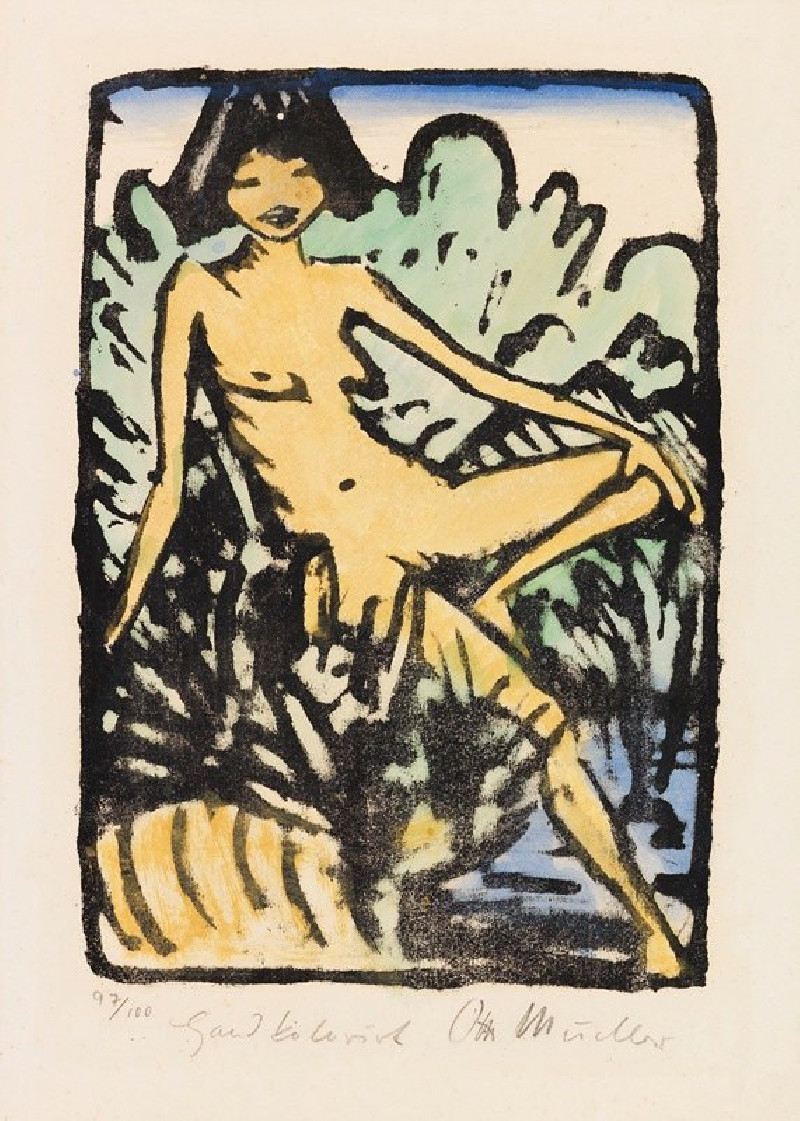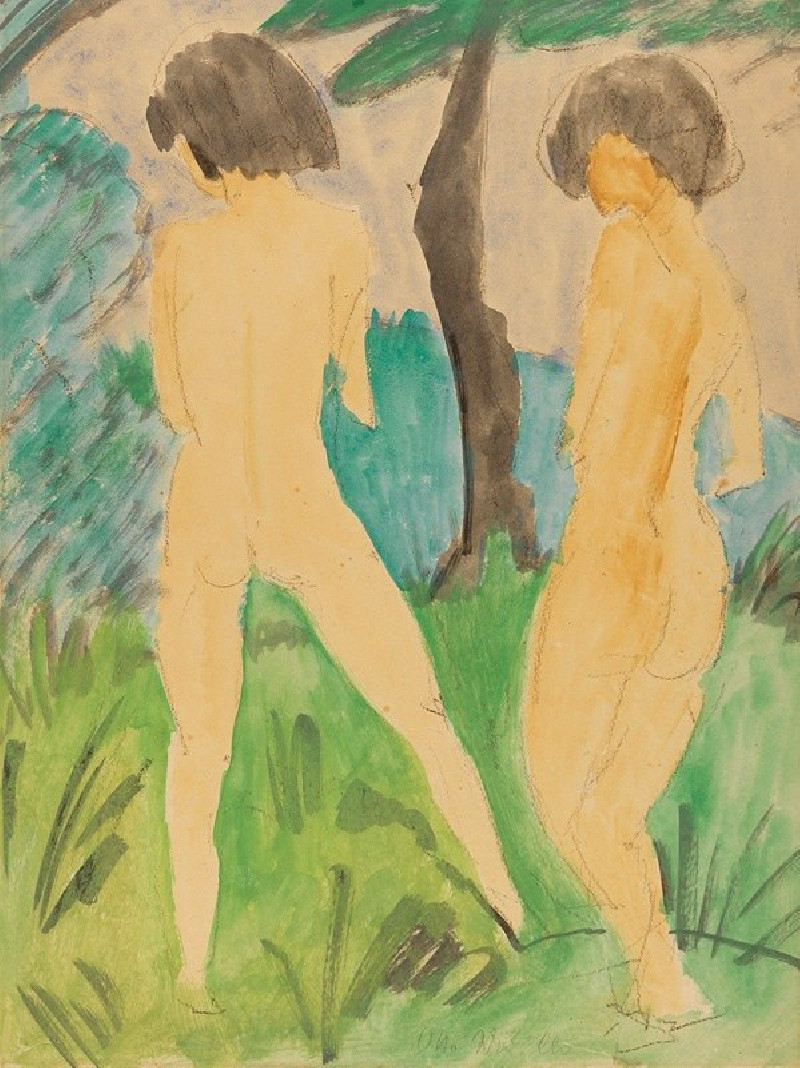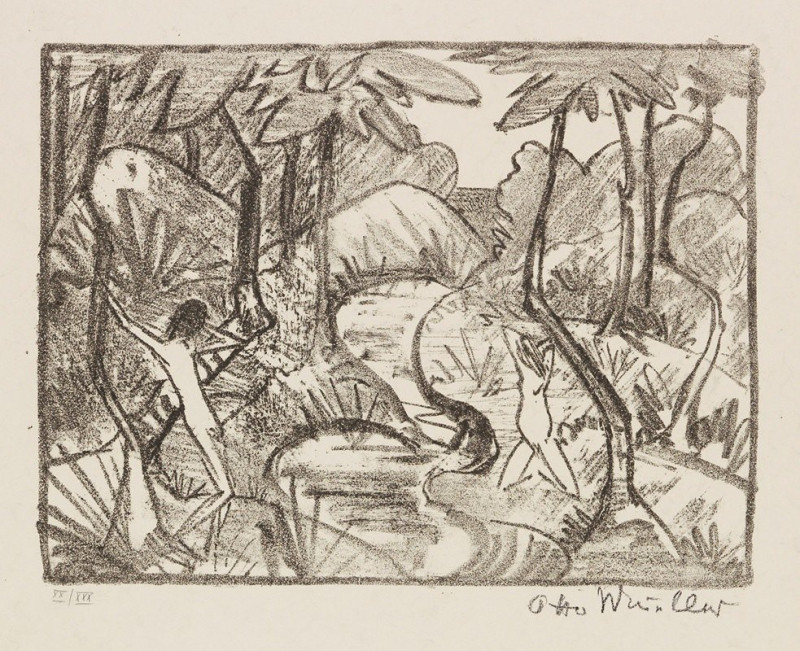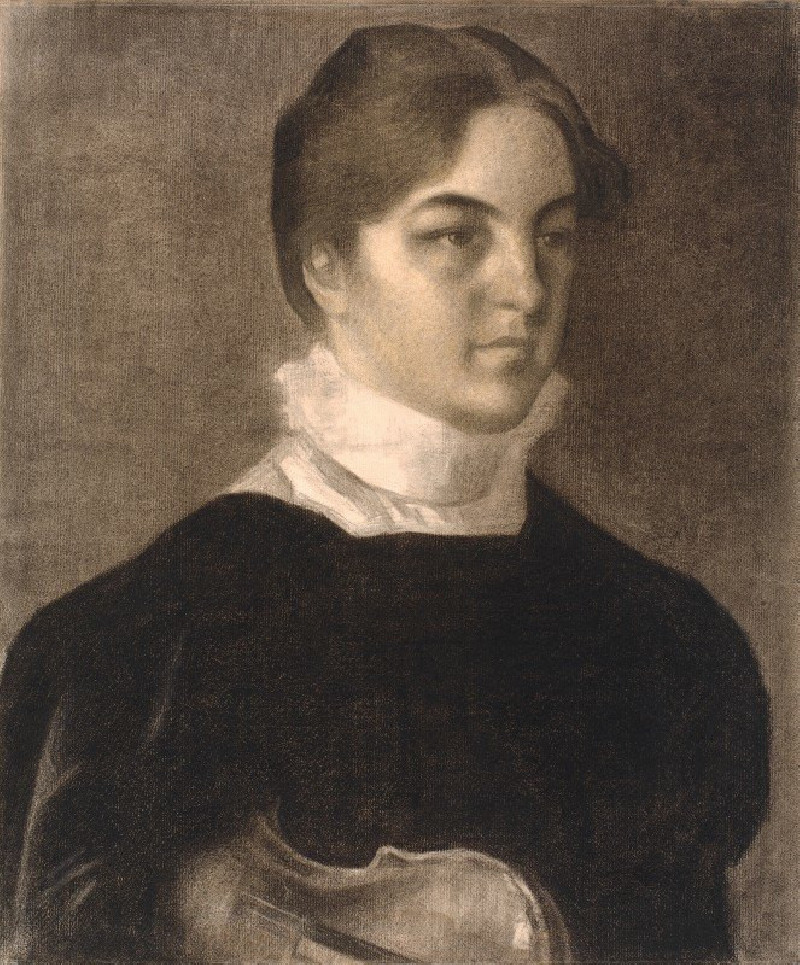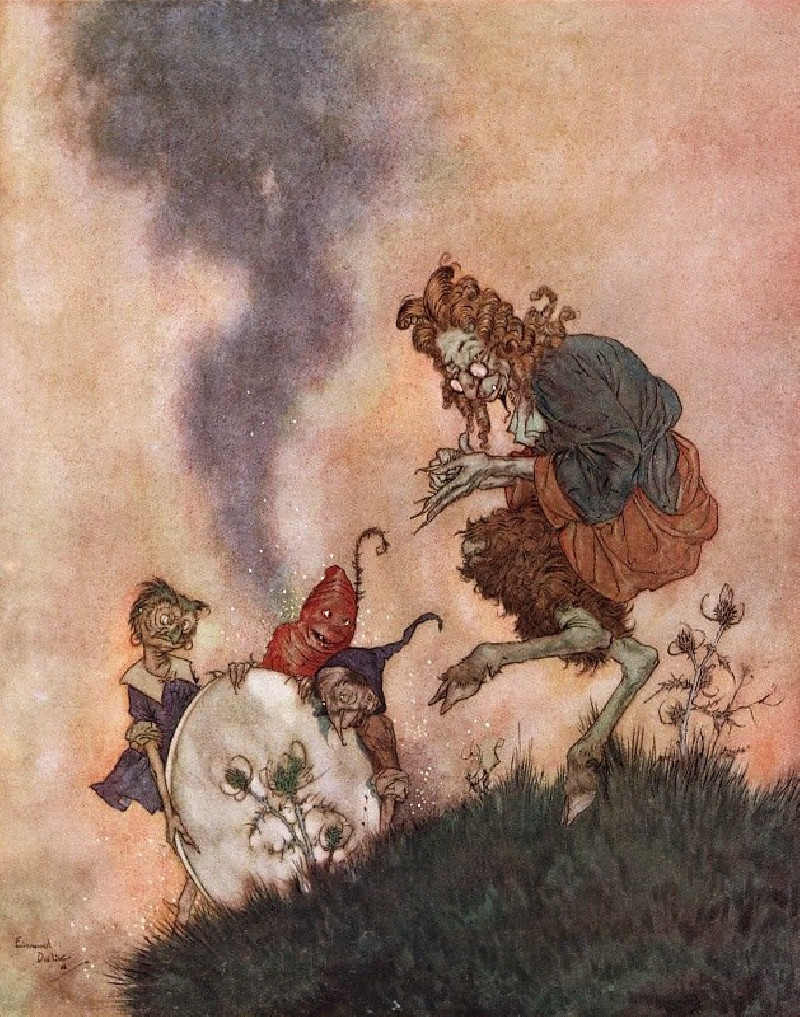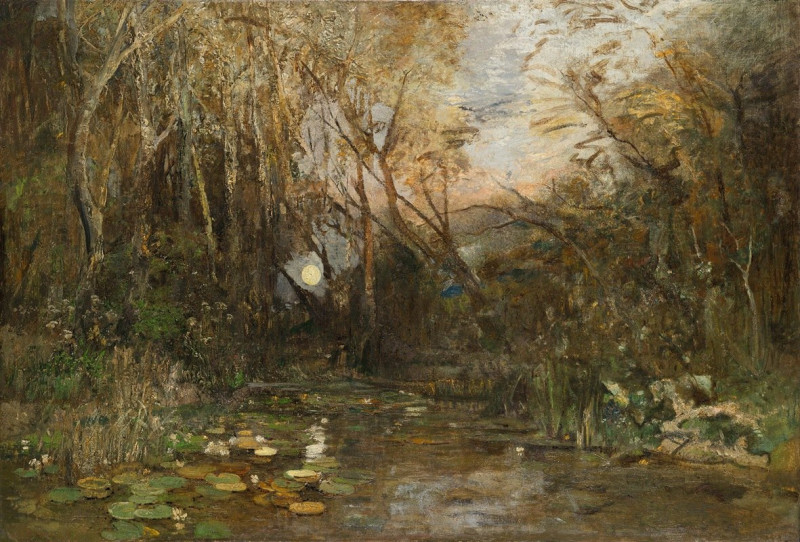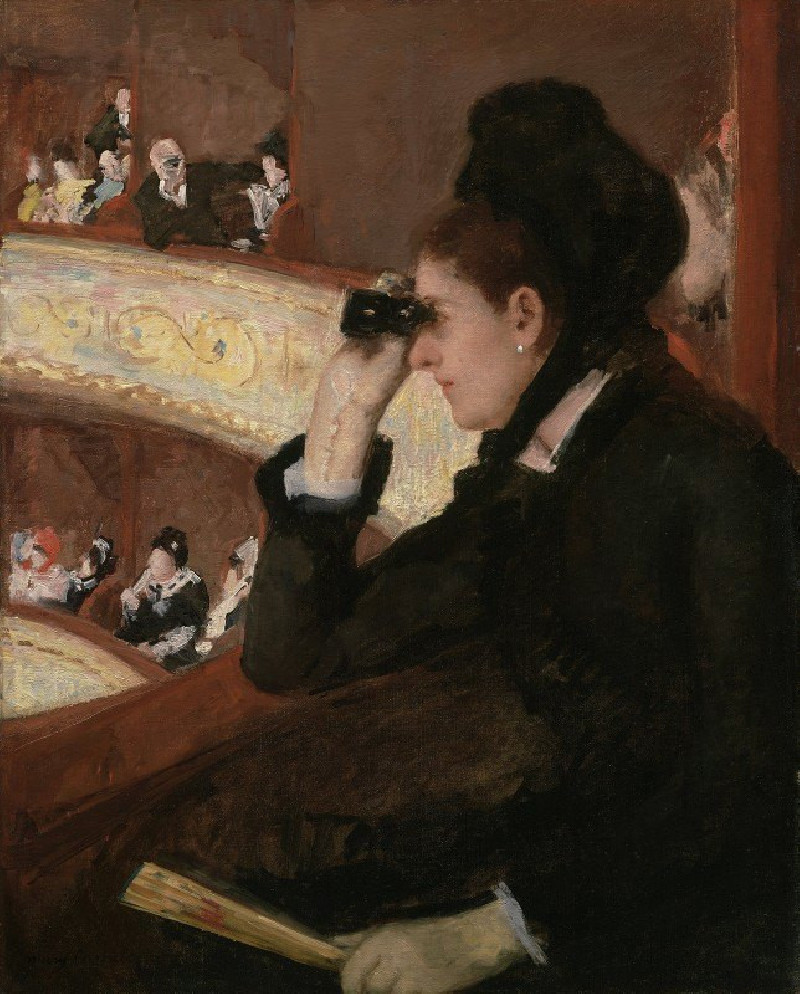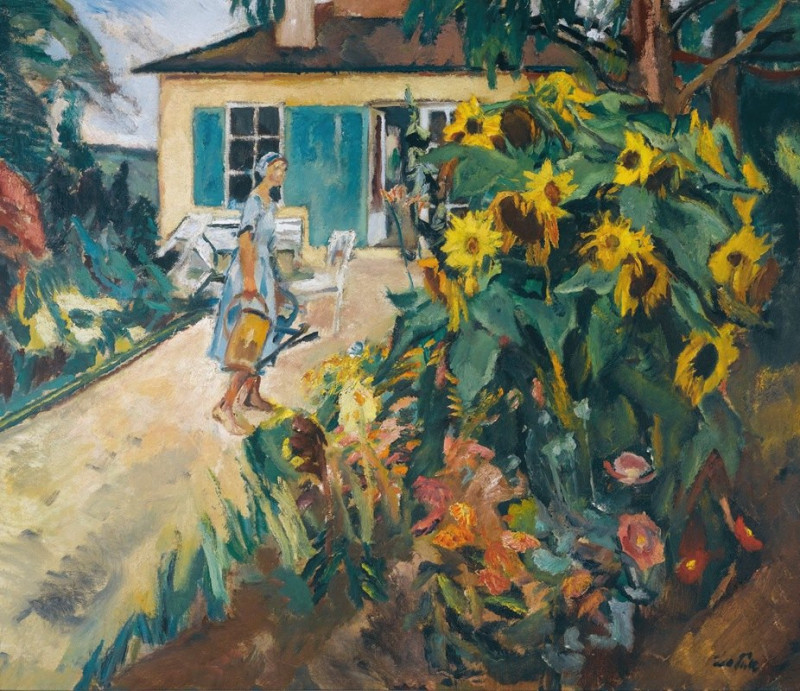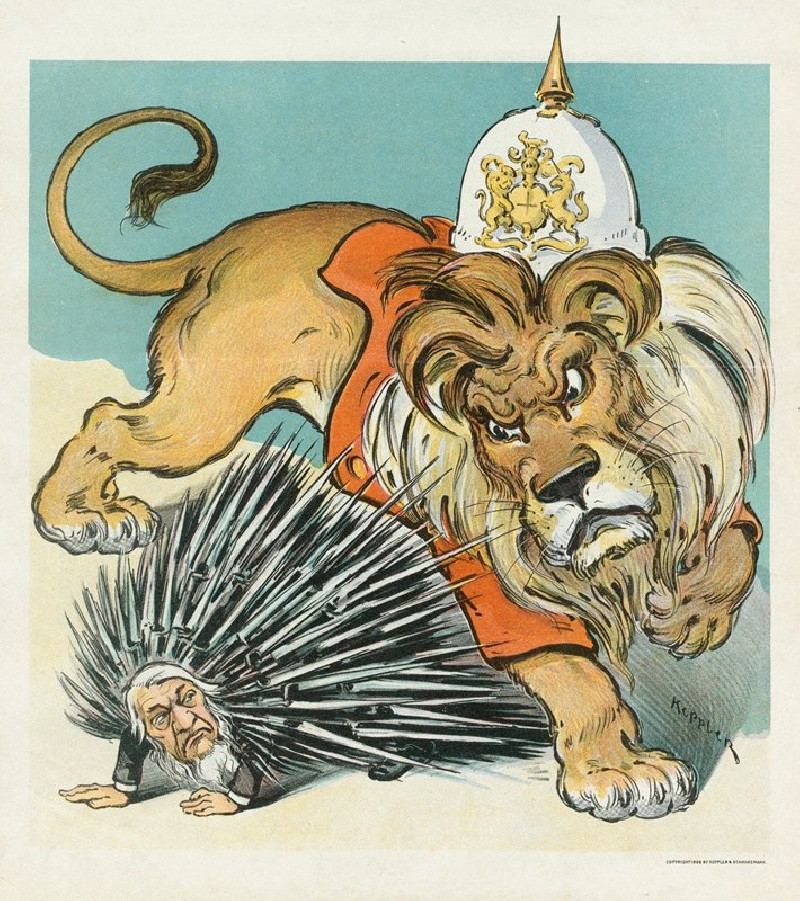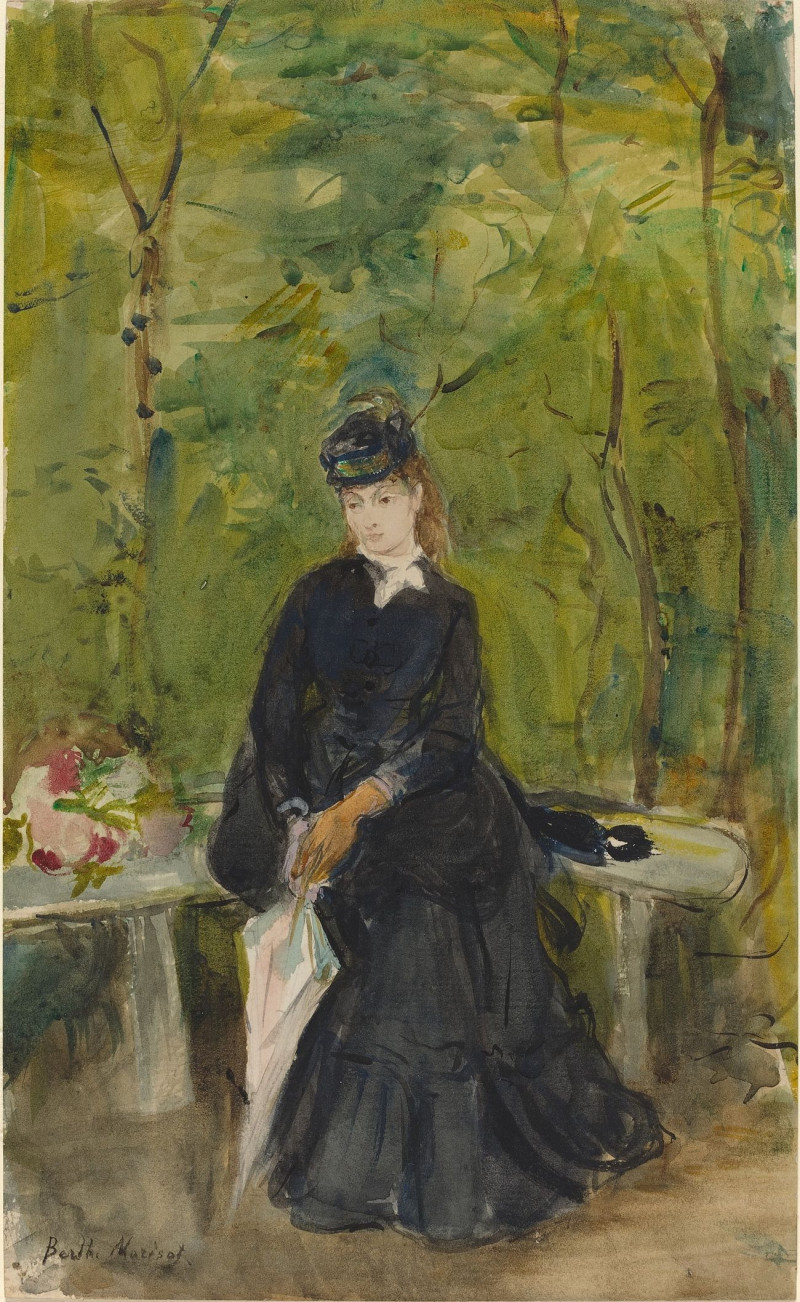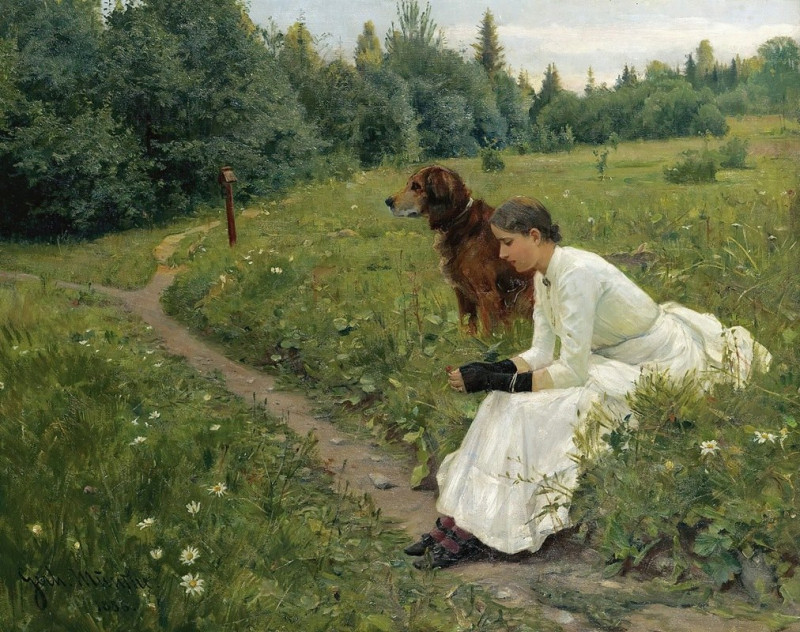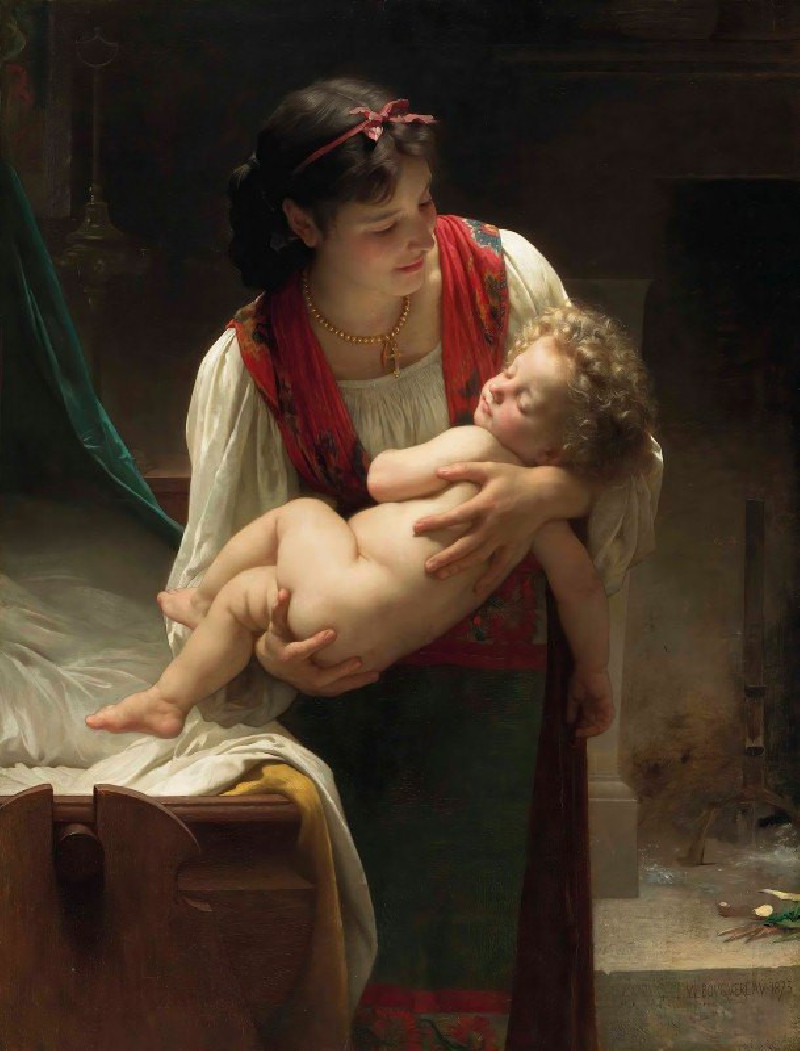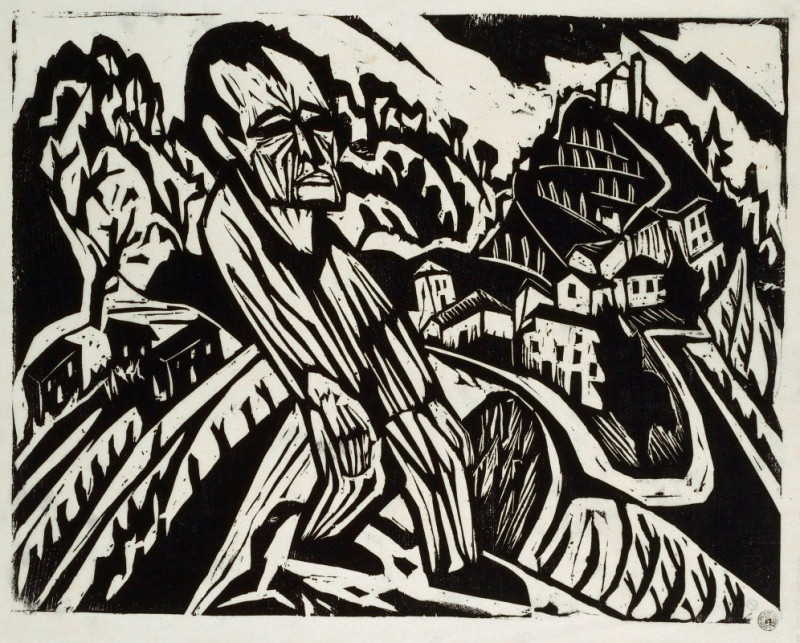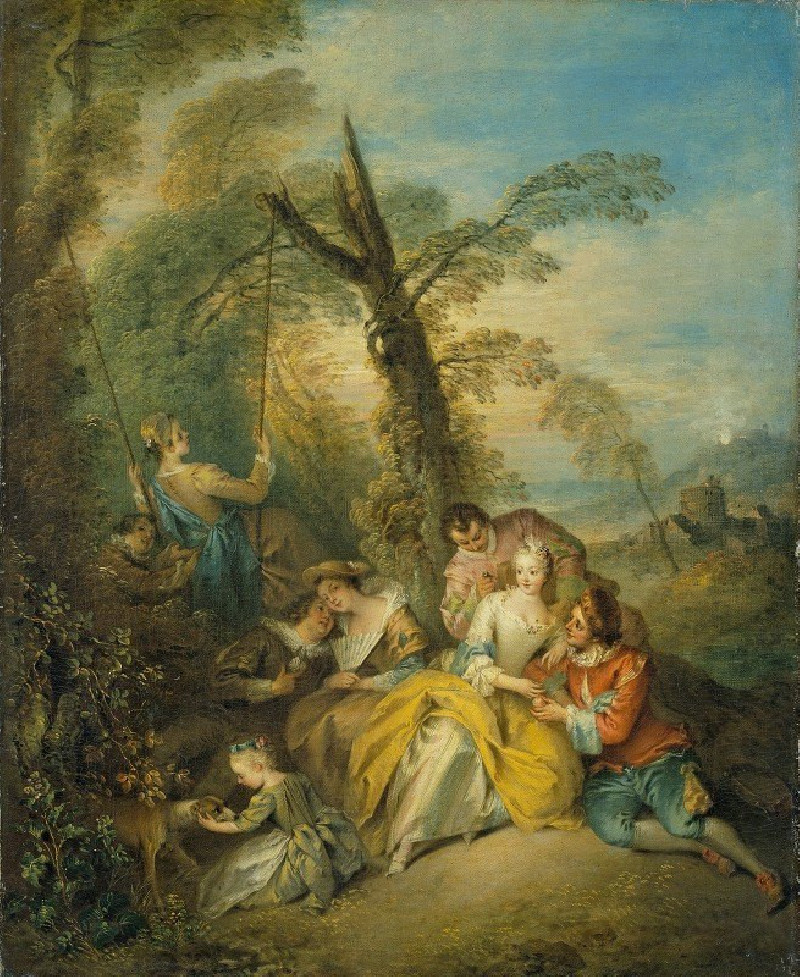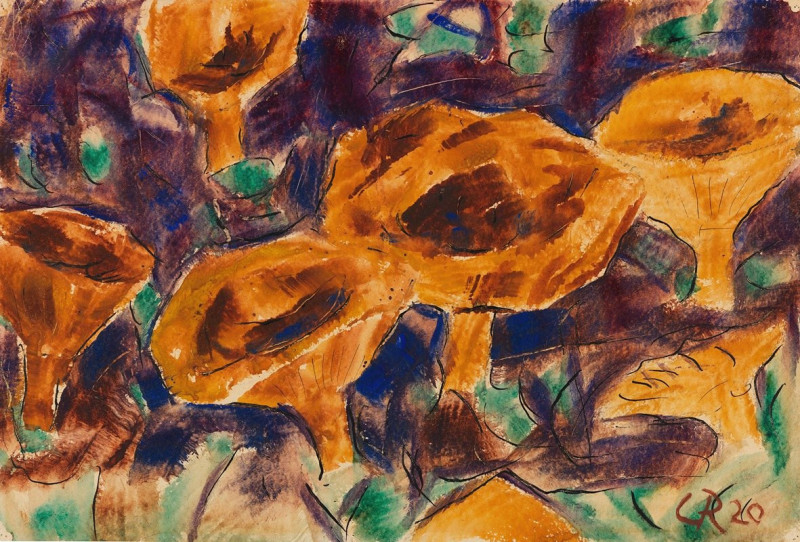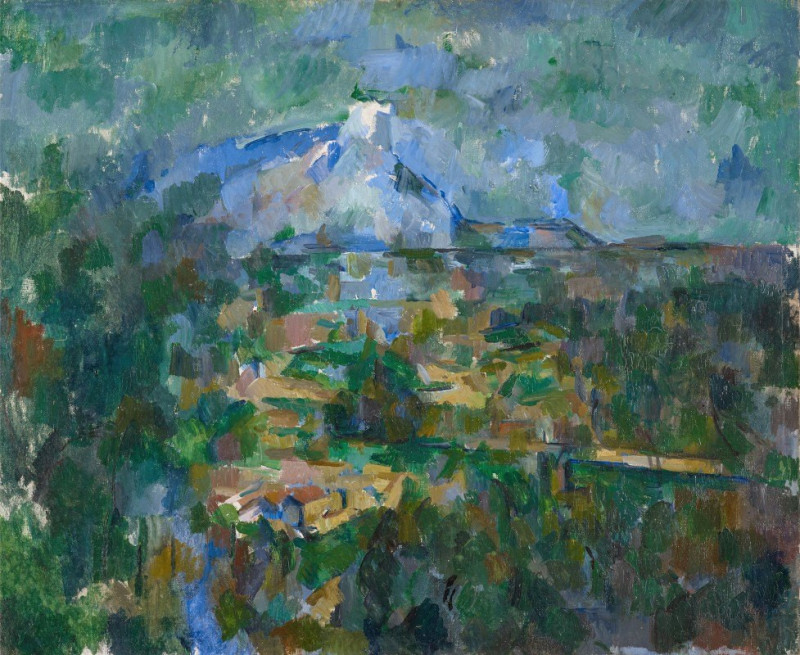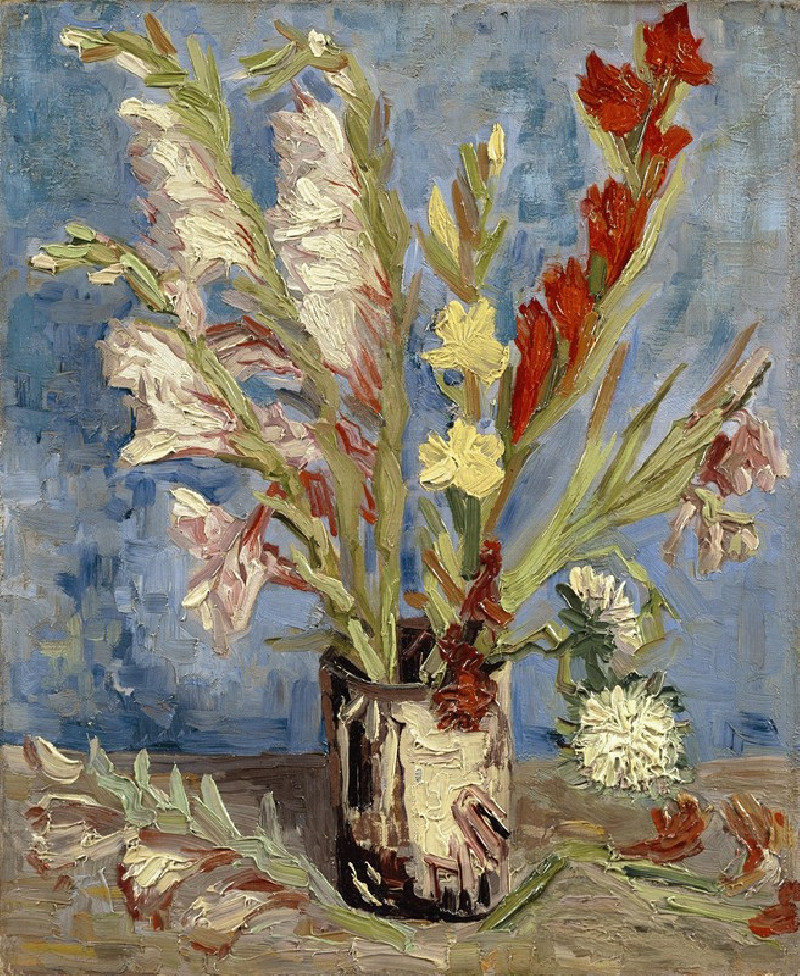Zwei Mädchen (1912)
Technique: Giclée quality print
Recommended by our customers
More about this artwork
Otto Mueller’s expressive artwork, “Zwei Mädchen” (Two Girls), painted in 1912, captures a deeply intimate and serene moment between two figures. This painting is a brilliant example of Mueller’s distinctive style within the German Expressionist movement, particularly within the group known as Die Brücke.The composition features two nude females entwined in a comforting embrace, rendered in earthy tones against a sparse background. The use of bold, red color highlights the garment or drapery, drawing attention to the fluidity and softness of its form, contrasting with the more subdued color palette of the figures and the background. The simplicity of the background, marked with minimal yellow strokes, focuses the viewer’s attention on the subjects themselves, enhancing the emotional depth of their connection.Mueller’s technique of combining rough textural details with gentle contours emphasizes the natural beauty and vulnerability of the figures. The artist’s use of seemingly unfinished surfaces and visible paper grains contributes to the overall feeling of immediacy and authenticity.“Zwei Mädchen” is not just a portrayal of physical closeness, but is also evocative of the emotional resonance between the figures, suggesting themes of friendship, trust, and possibly love. This intimate portrayal invites viewers to reflect on the nature of human connection, portrayed through Mueller’s expressionist lens.At our gallery, this piece stands as a testament to Otto Mueller's unique ability to convey complex human emotions through simple, yet powerful visual narratives.
Delivery
Returns
Otto Müller was a German painter and printmaker of the Die Brücke expressionist movement.
Mueller was born in Liebau (now Lubawka, Kamienna Góra County), Kreis Landeshut, Silesia. Between 1890 and 1892 he was trained in lithography in Görlitz and Breslau. From 1894 to 1896 he studied at the Academy of Fine Arts in Dresden and continued his study in Munich during 1898. He left Munich's academy after Franz von Stuck classified him as untalented.

